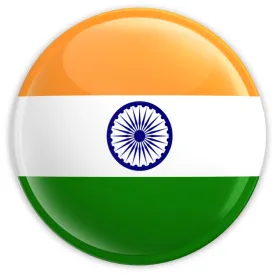On June 3, 2015, U.S. Secretary of Defense Ashton Carter and Indian Defense Minister Manohar Parrikar signed a 10-year defense framework agreement during Secretary Carter’s 10-day trip to the Asia-Pacific region, which included a stop in India. This framework agreement comes at a time when the United States and its allies are stepping up defense industrial ties in Asia as a counterweight to China’s military growth and assertion of sovereignty in the East and South Asia. Strengthening U.S.-India relations has been a key part of the Obama Administration’s Asia policy and the renewed defense framework and other related developments took shape during President Obama’s January 2015 trip to New Delhi, where he was the Chief Guest for India’s 66thRepublic Day celebrations.
The first U.S.-India defense framework agreement was signed in 2005 and outlined a number of areas for cooperation, “setting the U.S. and India on a path to increasingly broad, complex and strategic cooperation.” In 2012, under then Deputy Secretary of Defense Ashton Carter, a new initiative—now known as the Defense Technology and Trade Initiative (DTTI)—was launched to further bi-lateral defense cooperation and trade through increasing the involvement and engagement of senior leadership from both sides. The 2015 framework agreement recognizes DTTI and mentions co-development and co-production of defense articles and services, including technology—underscoring the priority on both sides to further defense ties in these areas.
According to a recent Pentagon press release, the renewed agreement “builds upon the previous framework and successes to guide the bilateral defense and strategic partnership for the next 10 years. The agreement provides avenues for high level strategic discussions, continued exchanges between armed forces of both countries, and strengthening of defense capabilities.” Supported by the framework and as part of DTTI, the U.S. and India have finalized agreements on two projects: joint development of mobile electric hybrid power sources and next generation protective ensembles for soldiers operating in biohazard environments. “This is just one more of the many signs of what a positive trajectory we continue to be on with the defense community here in India,” Carter recently said during a media event in New Delhi.
The innovative technologies resulting from increased U.S.-India collaboration could be produced by India’s growing industrial base, aligned with Prime Minister Modi’s “Make in India” policy. Although the initial investment in the two DTTI projects is modest—with the U.S. and India each committing a total of $500,000 over two years for each project—the value of the collaboration is far greater when measured in terms of the strategic realignment the partnership signals, especially vis-à-vis concerns over the balance of power in the region.
Richard Fontaine, president of the Center for a New American Security, noted in a DefenseNews article that “[t]he two joint research projects, announced during the trip as part of the Defense Trade and Technology Initiative, are very small, but they are a start,” Fontaine said. “With hope, this will energize the DTTI, which so far has yielded few concrete benefits to the two sides.” In addition, it is reported that India has offered to buy two intelligence, surveillance, target acquisition and reconnaissance (ISTAR) aircraft from the U.S. on a government-to-government basis. Carter and Parikkar also reportedly agreed to expedite talks on cooperation with respect to jet engines and aircraft carriers. Cooperation between the two countries is expected to increase under the renewed framework and the recent developments are a few examples of the types of cooperation and trade we will see between the two countries.
Given the recent developments in the U.S.-India defense and security relationship, Covington and Tatva Legal hosted the Third Annual India-U.S. Defense and Security Forum in New Delhi in May. The Forum brought together top executives of major U.S. and Indian companies involved in defense and the defense-related sectors, along with senior officials from both governments, thought leaders, and key industry participants, to engage in in-depth and action-oriented discussions on the impact of the policy changes, the new opportunities, and the existing challenges related to expanding the U.S.-India- defense sector relationship. “Defense trade between India and the U.S. creates a win-win opportunity for India and U.S. companies, and our Forum will help corporate leaders learn more about the opportunities in technology and trade that will come over the next decade,” said Ralph Voltmer, chair of Covington’s India practice.
Cross-border trade and business relationships between U.S. and Indian companies are likely to grow in light of the renewed framework agreement and other policy changes and new priorities on both sides. As such, companies doing business with and in India will need to be aware of changes in the legal and regulatory landscape. To that end, the U.S. India Business Council will be hosting lawyers as part of the Indian National Bar Association (INBA) delegation at Covington’s Washington, D.C. office next week for discussions focused on recent legal developments in Foreign Account Tax Compliance (FACTA), corruption and off-shore accounts as well as developments, trends, and hot topics in cross-border mergers & acquisitions.




 />i
/>i

